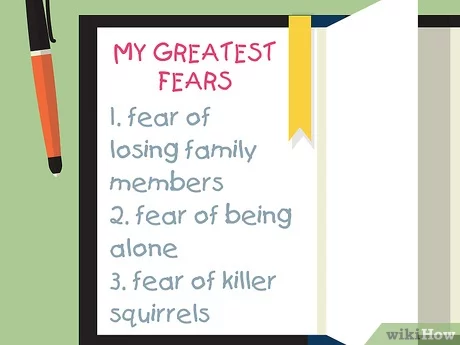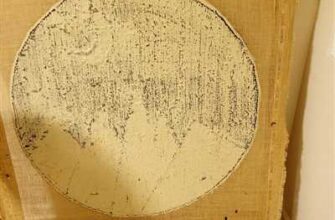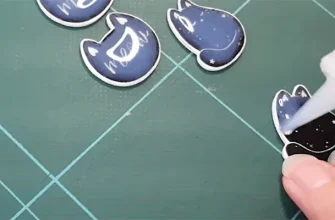
Writing a creepy story is a unique and thrilling experience that can send shivers down your readers’ spines. Whether you are a beginner or an experienced writer, knowing how to craft a story that instills horror and suspense is a valuable skill. In this article, we will explore the core elements of a creepy story and offer helpful tips to help you create an unforgettable reading experience.
One of the most important aspects of a creepy story is the setting. The environment you describe plays a crucial role in creating a sense of terror and dread. Whether it’s a haunted house, a dense forest, or a medieval castle, the setting should be vividly detailed to immerse the readers in a chilling atmosphere. Use descriptive sentences to paint a picture of the surroundings, including sensory details to engage the reader’s imagination.
Another key element to consider is the supernatural or monsters. Whether you introduce ghosts, demons, or otherworldly entities, these supernatural beings will heighten the tensions and fears in your story. Describe their appearances, their movements, and the effect they have on the characters and the environment. To make your creepy story even more terrifying, consider adding some unexpected twists and surprises when it comes to these supernatural beings.
Building suspense is also crucial in a creepy story. The feeling of suspense comes from the fear of the unknown and anticipation of what might happen next. Utilize suspenseful techniques such as cliffhangers, foreshadowing, and unexpected plot twists to keep your readers on the edge of their seats. By leaving questions unanswered and secrets hidden, you can generate a sense of unease that will keep readers turning the pages.
Moreover, a good creepy story should make the readers ask themselves questions. What is lurking in the shadows? Who is behind the mysterious events? Is there something hiding in that abandoned house? By raising questions and leaving them unanswered, you engage the readers’ curiosity and keep them hooked on the story.
Additionally, a touch of humor can serve as an effective tool to intensify the suspense. Funny or ironic moments can provide relief from the tension while simultaneously making the scary moments even more impactful. However, be careful not to overuse humor, as it may undermine the overall atmosphere you are trying to create.
In conclusion, writing a creepy story is a challenging but exhilarating task. By paying attention to the setting, supernatural elements, suspense, and unanswered questions, you can craft a compelling and spine-chilling tale. Remember to show, not tell, and allow your readers to draw their own conclusions. Happy writing, and may the terror in your story give readers goosebumps they won’t soon forget!
- How to write a horror story Telling tales of terror
- Start with a fear factor
- Instinctive fears
- Monsters and supernatural entities
- Societal tensions
- Consider pacing
- Frequently Asked Questions
- How do you start a horror story
- What are the 5 elements of a horror story
- What makes a good horror story
- How do you write in creepy writing
- How do I make my character terrifying
- Expert QA
- Video
- 💀 How I Write Horror Short Stories 💀
How to write a horror story Telling tales of terror

When it comes to writing a horror story, there are a few key elements that can make it truly spine-chilling and memorable. Whether you’re a seasoned writer or just starting out, here are some tips to help you create a truly creepy tale:
1. Start with a strong setting: The setting of your story plays a crucial role in creating a sense of fear and tension. Choose a location that will enhance the eerie atmosphere, such as an abandoned house or a dark forest.
2. Create believable characters: Your characters are the heart of your story. Make sure they’re relatable and well-developed, so that readers can feel their fear and connect with them on a human level.
3. Build suspense and tension: One of the most important aspects of a horror story is the buildup of suspense. Use sentences that are short and impactful, and reveal information gradually to keep readers on the edge of their seats.
4. Include unexpected twists: Surprise your readers by incorporating unexpected plot twists. These twists should challenge their expectations and keep them guessing until the very end.
5. Use fear to your advantage: Horror stories are all about tapping into our deepest fears. Choose a fear that resonates with your audience, whether it’s the fear of the dark, the fear of the unknown, or something more psychological.
6. Add a touch of humor: While horror stories are meant to be scary, a little bit of humor can help to break the tension and provide some relief for your readers. Introduce a funny or quirky character to lighten the mood at times.
Remember, writing a horror story requires practice and patience. Don’t be afraid to experiment with different techniques and styles to find what works best for you. The more you write, the more you’ll learn and grow as an expert in the genre.
And don’t forget to read and watch horror stories for inspiration. Analyze how the tension is built, the characters are developed, and the plot unfolds. Pay attention to how societal tensions and fears are explored in these stories.
If you’re looking for more guidance, there are many helpful resources available online and in books. Some recommended sources include “On Writing Horror: A Handbook by the Horror Writers Association” and “Writing the Horror Movie” by Marc Blake and Sara Bailey.
So why not grab a pen, sit down, and begin writing your own spine-chilling tale? You never know, you might just create the next blockbuster horror film!
Thanks to Christopher John from Texas for providing feedback and helping to improve this guide.
Start with a fear factor
When crafting a creepy story, it’s important to start with a fear factor that will keep readers on the edge of their seats. The setting of your story plays a crucial role in creating a sense of dread and terror. Whether it’s a dark and eerie forest or an abandoned house with a haunted history, the environment sets the stage for spine-chilling encounters.
One way to build suspense is by introducing supernatural entities or monsters that lurk in the shadows. These creatures can be anything your imagination conjures up – from terrifying vampires to malevolent spirits. By describing their appearance, abilities, and the fear they instill in people, you will immerse your readers in a world of dark and macabre.
Another effective technique is to create a mysterious plot that keeps readers guessing. Through clever pacing and well-timed reveals, you can maintain a sense of suspense throughout the story. As readers eagerly turn the pages, they will be compelled to uncover the truth behind the supernatural occurrences and the fate of the characters.
While horror tales often revolve around the unknown, it’s crucial to tap into common fears that readers can relate to. This can be accomplished by incorporating elements such as fear of the dark, fear of the unknown, fear of death, or fear of isolation. By addressing these universal fears, you create an emotional connection with your readers, making the terror more personal and impactful.
Inspiration for creepy stories can come from various sources. Reading literature in the horror genre, watching horror movies, or exploring real-life ghost stories can provide helpful insights and ideas. Online communities like gonift.com offer a great platform to connect with fellow writers, share ideas, seek feedback, and ask questions. Engaging with an expert or joining a writing community can help you refine your skills and create stories that keep readers up at night.
Remember, creepy stories don’t always have to be full of gore and violence. Adding a touch of humor or dark humor can create an interesting contrast and make the scary moments even more impactful. Funny or ironic sentences can also provide a break from the intensity and allow readers to catch their breath before diving back into the story.
When writing creepy stories, it’s important to consider pacing. Building suspense gradually and then releasing it in a climactic moment keeps readers hooked and engaged. Studies have shown that well-paced stories are more likely to be enjoyed by readers and leave a lasting impression.
So, whether you’re an experienced writer or just starting out, don’t be afraid to embrace the fear and let your dark imagination run wild. Create a valid, terrifying world that readers won’t be able to resist. And remember, the scariest stories are the ones that elicit a lingering sense of dread and terror, long after the final page is read.
Thanks for reading and happy writing!
Instinctive fears

Tension is a frequently used technique in writing creepy stories. It helps create a sense of dread and keeps readers on the edge of their seats. Feedback studies have revealed that people fear the supernatural without understanding why. This is where the expert comes in. To write a truly creepy story, one must consider both societal fears and instinctive fears.
When telling a creepy story, it is important to give the characters a strong core. Readers need to be able to relate to the characters and empathize with their fear. Without well-developed characters, the story may fall flat and lose its impact.
One technique that helps evoke instinctive fear is descriptive and vivid writing. Paint a picture with your words and make the readers feel like they are right there with the characters. Use the five senses to offer a full sensory experience and make the story more immersive.
Consider the setting of your creepy story. The dark, eerie forest, an abandoned house, or a medieval castle can all be great locations to create a sense of dread. Use the environment to your advantage and make it a character in itself.
Another important aspect to consider is the reveal of the monsters or supernatural elements. Don’t show them too early or too often. Build anticipation and suspense, gradually revealing the true nature of the threat.
In Texas, there is a college professor named Christopher who teaches a course on writing creepy stories. He is an expert in the field and his guide on “How to Write Creepy Stories” has helped many aspiring writers find their voice. It’s a great resource for anyone looking to dive into the world of horror writing.
If you enjoy reading creepy stories, consider helping the writing community by paying for the products that you love. By supporting authors and their work, you contribute to the growth and development of the genre.
In conclusion, instinctive fears play a crucial role in writing creepy stories. By understanding what makes people afraid and using descriptive techniques, writers can create a sense of tension and dread that keeps readers hooked. Whether it’s the fear of the supernatural, dark forests, or the unknown, tapping into these instinctive fears will make your stories truly haunting.
Thanks for helping our community, and happy writing!
Monsters and supernatural entities
When it comes to writing creepy stories, monsters and supernatural entities play a crucial role. They add an extra layer of fear and suspense to the narrative, keeping the readers hooked from beginning to end. In this guide, we will explore how writers can effectively create these monstrous characters and entities to give their readers a truly terrifying experience.
One of the key elements in creating monsters is understanding the core fears of human beings. These fears can be both internal and external, often reflecting the societal tensions and anxieties. By tapping into these deep-seated fears, writers can create monsters that not only scare their readers but also offer a valid contribution to the genre.
The first step in creating a monster is to decide on its characteristics and appearance. This can be done by asking questions such as: How does the monster look? What are its supernatural abilities? How does it interact with the human world? The answers to these questions will help shape the overall image of the monster.
Another crucial factor in creating monsters is the technique of pacing. By controlling the flow of the story, writers can build tension and suspense, making the moments with the monster even more frightening. Pacing can be achieved through techniques such as foreshadowing, cliffhangers, and well-timed reveals.
Furthermore, writers should consider the environment in which the monster exists. For example, a monster lurking in the dark corners of a forest will create a different kind of suspense compared to one that haunts a small Texas town. The setting can greatly impact the overall atmosphere of the story, making it even more creepy and unsettling.
When it comes to specific monsters, there are countless options to choose from. From classic creatures like vampires and werewolves to more contemporary entities like ghosts and demons, the choice is yours. Research and study the monsters from various sources, including literature, movies, and community discussions, to learn about their traits and how they have been portrayed in different contexts.
As a writer, it is essential to have a clear plot and a well-developed set of characters. The monster should serve as a driving force behind the story, pushing the characters into challenging and terrifying situations. By crafting compelling and relatable characters, the reader will feel a deeper connection to the story and the horror it presents.
To make the reader feel the horror on a deeper level, incorporating the readers’ own fears and emotions is vital. By appealing to their own personal fears and vulnerabilities, the writer can create a more engaging and impactful experience. This can be achieved through vivid and descriptive sentences, creating a sense of dread and unease.
Finally, feedback from the reader community is an essential part of the writing process. Sharing your work with others and receiving their input can help identify areas for improvement and ensure the story is resonating with the intended audience. Embrace the feedback, positive and negative, and use it as a tool to hone your storytelling skills.
In conclusion, monsters and supernatural entities are a key element in writing creepy stories. They create tension, provide suspense, and offer readers a thrilling experience. By understanding the fears and anxieties of the human psyche and incorporating compelling characters and plot elements, writers can craft stories that will leave their readers feeling haunted long after they finish reading.
Societal tensions
Societal tensions play a significant role in creating a creepy and unsettling atmosphere in horror and suspense stories. This technique is particularly helpful in making the reader feel uneasy and anxious without directly involving supernatural entities or external threats. By tapping into people’s fears and anxieties, writers can create a world that is terrifying and relatable at the same time.
When societal tensions are included in a story, it gives the reader a valid reason to be afraid. These tensions can be anything from the fear of the unknown to the fear of the other. By exploring societal fears such as discrimination, social inequality, or the erosion of personal freedom, the writer can build suspense and terror that resonates with the reader.
One important factor to consider when writing about societal tensions is the use of humor. Humor can be an effective tool in alleviating some of the tension and providing moments of relief for the reader. It can also add depth to the characters and make their fears and struggles more relatable. However, the use of humor should be balanced and not overshadow the overall creepy atmosphere of the story.
By telling stories that are set in a familiar place or situation, such as a small town or a college campus, the writer can tap into the reader’s instinctive fears. For example, a story set in a remote Texas town where strange occurrences happen in an old abandoned house can evoke a sense of fear and unease in the reader.
The clothing and appearance of the characters can also be used to create a creepy atmosphere. Describing their clothing in a way that is unsettling or out of the ordinary can add an element of suspense to the story. Similarly, describing the physical appearance of the characters in a way that is unsettling or uncanny can contribute to the overall creepiness.
Another helpful technique is providing the reader with enough information to make them question their own beliefs and perceptions. This can be done through the use of unreliable narrators or ambiguous situations. By leaving certain elements of the story open to interpretation, the writer can create a sense of unease and uncertainty in the reader.
Additionally, incorporating elements from literature, movies, or urban legends can add depth and familiarity to the story. Drawing inspiration from classic horror films or well-known urban legends can help create a sense of nostalgia and make the reader feel more connected to the story.
In conclusion, societal tensions are a powerful tool in writing creepy stories. By exploring fears and anxieties that are inherent to the human experience, writers can create a world that feels both familiar and terrifying. Using techniques like humor, relatable settings, and ambiguous situations, writers can provide an unsettling reading experience that will keep the reader on the edge of their seat.
Consider pacing
When writing a creepy story, one of the most important aspects to consider is pacing. Pacing refers to the speed at which events unfold in your story. It’s what creates the sense of tension and anticipation, leading to moments of terror that will keep your readers hooked.
The beginning of your story should be slow and steady, setting the stage for what’s to come. This helps to establish a sense of place and introduces your characters. The introduction of the characters is critical, as it allows the readers to establish a connection with them. You can use descriptive sentences to paint a picture of the place and create a sense of atmosphere. For example, “The old house stood at the end of the street, its windows boarded up, and a gnarled tree casting eerie shadows on its walls.”
As the story progresses, the pace should pick up. This can be achieved by introducing more terrifying entities or increasing the intensity of the supernatural occurrences. Be sure to use vivid descriptions to enhance the sense of horror and fear. For example, “In the middle of the night, John heard a chilling whisper coming from his closet. He crept towards it, his heart pounding in his chest, only to find the door creaking open to reveal a pair of glowing red eyes.”
However, it’s important to remember that pacing is not just about speed. It’s also about knowing when to slow things down and give your readers a break. By doing so, you can build suspense and anticipation for the next terrifying moment. This can be achieved by including moments of humor or providing insight into the characters’ fears and vulnerabilities. For example, “As Christopher walked through the dark hallway, his mind filled with thoughts of the medieval ghost that haunted the house. Suddenly, he tripped over a loose floorboard and let out a nervous chuckle, realizing that even in the face of terror, clumsiness could still find a way to light his way.”
By considering pacing in your creepy story, you can create a rollercoaster ride for your readers, alternating between moments of tension and moments of relief. This helps to keep them engaged and invested in your story until the very end. So next time you sit down to write a creepy story, remember to pay attention to the pacing. Your readers will thank you for it.
Frequently Asked Questions
-
How can I start writing creepy stories?
To start writing creepy stories, it’s important to create a setting that evokes a sense of dread and terror. Think about dark, creepy places like an abandoned house, a haunted forest, or a medieval castle. Include supernatural elements or entities that add to the fear and suspense.
-
What makes a creepy story very scary?
A creepy story becomes very scary when it elicits a strong sense of fear in the reader. Elements like pacing, tension, and unpredictability play a pivotal role in creating moments of terror. The expert contribution of our writing guide helps to offer helpful insights into providing a full sense of fear.
-
How can I create tension in my creepy story?
To create tension in your story, focus on building up suspense. Use descriptive language that heightens the reader’s senses and creates a feeling of unease. You can also introduce unexpected twists and turns that keep the reader on edge.
-
What are some tips for writing horror stories?
When writing horror stories, it’s important to tap into common fears and societal tensions. Explore themes like isolation, the unknown, or the loss of control. Use vivid imagery and an evocative language to bring these fears to life and make them relatable to your readers.
-
How can I make my creepy story more suspenseful?
To make your story more suspenseful, use pacing to control the flow of information. Slow down the narrative during intense or eerie moments, allowing the tension to build. Then, release it through shocking reveals or unsettling events that leave the reader on edge.
-
How do I write a good creepy story without relying on gore?
A good creepy story doesn’t have to rely on gore to be effective. Instead, focus on building atmosphere and creating a sense of psychological dread. Use subtler elements like eerie sounds, strange occurrences, or unsettling encounters to evoke fear in your readers.
-
What are some common themes in creepy stories?
Common themes in creepy stories include supernatural entities, haunted places, psychological horror, and the unknown. These themes tap into our instinctive fears and can create a sense of unease that lingers long after the story has been read.
-
Can you recommend any resources for learning more about writing creepy tales?
Sure! If you’re looking to learn more about writing creepy tales, “Gonift.com” is a great online community for horror and suspense writers. They offer a range of helpful resources, including writing guides, tutorials, and a supportive community of fellow writers.
-
How can I overcome writer’s block when working on a creepy story?
If you’re experiencing writer’s block, especially when working on a creepy story, taking a break and doing something else can help. Explore other creative outlets, like drawing or listening to spooky podcasts, to help spark your imagination. You can also try free writing, where you write without judgment or expectation, to help get your creative juices flowing.
If you have any more questions or need further assistance, feel free to ask! Our expert writing assistant is always happy to help.
How do you start a horror story
Starting a horror story can be both exciting and challenging. To create a creepy atmosphere and capture the reader’s attention right from the beginning, it’s important to consider several key elements. Here are some helpful tips on how to start a horror story:
- Set the scene: The setting is crucial in horror stories as it helps to create an eerie and unsettling atmosphere. Describe the location in a way that gives the reader a sense of unease. For example, “In the heart of the dark forest, a dilapidated old house stood abandoned, its walls covered in ivy.”
- Introduce the main character: The protagonist is the reader’s guide through the terrifying events that unfold. Make the reader feel connected to them by providing a brief description of their personality or background. For instance, “Christopher, a college student from Texas, had always been fascinated by the paranormal.”
- Create tension: Building tension early on is essential in a horror story. Without tension, the reader may not feel the fear and suspense that the story intends to evoke. Incorporate moments of unease or foreshadowing, such as “Little did he know that the house he had just entered was haunted by malevolent entities.”
- Offer a glimpse of the unknown: To pique the reader’s curiosity, hint at something mysterious or supernatural. This could be achieved by mentioning a strange noise or an unexplained event. For example, “As the door creaked open, a chilling breeze swept through the room, causing the candle flames to flicker.”
- Focus on fears: Horror stories are centered around fears, so it’s important to tap into the most common and instinctive ones. Whether it’s fear of the dark, monsters, or something else entirely, use descriptive language to create a sense of dread. For instance, “Her heart raced as she heard footsteps behind her, but when she turned around, she saw nothing but the shadow of a tall, twisted tree.”
Remember, when writing a horror story, you want to engage the reader’s senses and make them feel the fear and tension. By using descriptive language, setting the scene, and introducing compelling characters, you can start your horror story on a thrilling and captivating note.
What are the 5 elements of a horror story
When it comes to writing a horror story, there are five key elements that can make it truly spine-chilling and keep readers on the edge of their seats.
- Suspense and Tension: A good horror story should create a sense of suspense and tension from the beginning. It should make readers feel a growing sense of unease, as if something terrible will happen at any moment.
- Setting: The setting of a horror story is crucial in creating an eerie atmosphere. Whether it’s a haunted house, a dark forest, or a desolate town, the setting should be described in a way that evokes a feeling of dread and isolation.
- Characters: The characters in a horror story play a vital role in generating fear. They should be relatable and realistic, giving readers someone to root for or fear for. It’s especially effective if the protagonist has their own internal struggles and fears.
- The Unknown and Supernatural Entities: Incorporating supernatural or unknown elements into a horror story can intensify the terror. Whether it’s a malevolent ghost, a monstrous creature, or something more sinister, the presence of these entities adds an extra layer of fear and unpredictability.
- Twists and Surprises: A great horror story will have unexpected twists and surprises that keep readers guessing. Whether it’s a shocking revelation about a character, a sudden change in the story’s direction, or an unforeseen turn of events, these surprises will keep readers hooked and engaged.
By incorporating these five elements into your horror story, you can create a truly terrifying and unforgettable tale. So, grab a pen and paper, and let your imagination run wild!
What makes a good horror story
When it comes to writing creepy stories, knowing what makes a good horror story is essential. To create a truly terrifying tale, there are some key elements and techniques you can employ.
One important aspect of a good horror story is the sense of fear and tension it creates. Moments of suspense and anticipation can keep readers on the edge of their seats, eagerly turning the pages to see what happens next. Pacing is crucial in building and releasing this tension effectively.
Another important element in a horror story is the presence of supernatural entities or monsters. These can range from ghosts and demons to creatures from folk tales or urban legends. The inclusion of these otherworldly beings adds an extra layer of terror and intrigue to the story.
Furthermore, the setting and atmosphere are vital in creating a creepy vibe. A dark forest, an abandoned house, or a haunted hospital can all provide the perfect backdrop for a terrifying tale. Describing the surroundings in intricate detail helps to immerse readers in the story and intensify their feelings of fear.
Strong and relatable characters are also essential in a horror story. Readers need someone to root for and connect with throughout the story. The character’s reactions to the terrifying events can mirror the readers’ own fears and make the story more engaging and impactful.
To create a sense of realism and make the horror story more believable, referencing societal and cultural aspects can be helpful. For example, drawing on real-life events or incorporating cultural traditions and beliefs can add depth and authenticity to the story.
Additionally, a good horror story should have a unique and unexpected twist. The element of surprise can keep readers engaged and on their toes. Twist endings or unexpected revelations can leave a lasting impression and make the story truly memorable.
Finally, when writing a horror story, it is important to pay attention to feedback and seek advice from experts in the field. Engaging in a writing community or seeking feedback from peers and mentors can help improve your storytelling skills and make your horror story even more effective.
| Christopher Carpenter | Professor of Horror Studies | University of Texas |
In conclusion, a good horror story is one that creates a sense of fear and tension, includes supernatural elements, has a strong setting and atmosphere, features relatable characters, incorporates societal and cultural aspects, and includes unexpected twists. With these techniques and elements in place, you can create a truly terrifying and captivating horror story that will please readers and leave them with an enduring sense of terror.
How do you write in creepy writing
When it comes to writing creepy stories, there are some key elements to consider in order to effectively send chills down your readers’ spines. In this guide, we will offer some helpful tips and advice on how to write in a creepy writing style that will leave your audience terrified and begging for more.
The first factor to consider is the use of descriptive language. By carefully choosing your words, you can create a sense of fear and tension throughout your story. Use vividly terrifying adjectives and adverbs to describe your characters, surroundings, and events. This will help to create a sense of unease and make your readers feel as if they are right there in the haunting house or eerie forest with your protagonists.
A good way to start is by providing vivid descriptions of the physical appearance and clothing of your characters. This will help your readers visualize the individuals in your story and establish a stronger connection with them. By describing their clothing in detail, you can add a layer of mystery and make your readers wonder what the characters are hiding beneath their deceptive exteriors.
Another important element to include in your creepy writing is the use of suspense. By building up the tension throughout your story, you can keep your readers on the edge of their seats, anticipating the horror that is about to unfold. Use short, fast-paced sentences and paragraphs to create a sense of urgency and capture your readers’ attention. Additionally, consider leaving some details open-ended or unanswered, allowing your readers to fill in the gaps with their own terrifying imaginations.
In addition to suspense, consider incorporating elements of surprise into your writing. Unexpected plot twists or the introduction of supernatural entities or monsters can catch your readers off guard, adding an extra level of fear and captivating their attention. By introducing unexpected elements, you can keep your audience guessing and make it difficult for them to predict what will happen next.
Humor can also be a helpful tool in creepy writing. By using dark humor, you can create a sense of irony and unsettle your readers further. Use sarcasm or unexpected punchlines to add a touch of macabre amusement to your story, making your readers uncomfortable but unable to look away.
Furthermore, when writing in a creepy style, it is important to tap into societal fears and anxieties. Consider the fears that most people have and find a way to exploit them in your writing. Whether it is the fear of the unknown, fear of death, or fear of losing control, incorporating these universal fears in your story will make it more relatable and terrifying to your audience.
Lastly, don’t forget the contribution of well-developed characters. People often feel fear when they can identify with the characters in a story. Create relatable and multi-dimensional characters that your readers will connect with and care about. This will make their journey through your creepy tale much more impactful.
In conclusion, writing in a creepy style requires careful consideration of various factors to create a truly terrifying story. From descriptive language to suspense and unexpected elements, these techniques will help you engage your readers’ instinctive fears. Just remember to pay attention to detail, make use of vivid imagery, and tap into societal fears. With these guidelines, you can write captivating and creepy tales that will haunt your readers long after they’ve turned the last page.
How do I make my character terrifying
To create a truly terrifying character, you need to tap into the dark and sinister aspects of human nature. By giving your character a complex and troubled past, you can create a sense of unease and dread that will leave your readers terrified.
Start by asking yourself some important questions about your character. What is their core motivation? What drives them to commit acts of terror? By answering these questions, you can give your character a compelling and believable backstory that will make them truly terrifying.
One way to make your character terrifying is to include supernatural elements. By providing a link to the supernatural, such as demonic possession or ancient curses, you can tap into deep-seated fears and increase the suspense in your story. Just make sure to describe these supernatural elements in a way that is both vivid and believable.
Another important aspect of making your character terrifying is their appearance and clothing. Use vivid and descriptive language to paint a picture of their menacing demeanor, from their dark and foreboding clothing to their unsettling eye color or disfiguring scars. These details will help to instill fear in your readers.
Moreover, it’s important to create tension and suspense throughout your story. Start by opening your story in a creepy or foreboding place, like a deserted house or a dense forest. Use the setting to your advantage, describing the eerie sounds and terrifying sights your character encounters.
One technique to make your character even more terrifying is to reveal their darker side gradually. Rather than revealing everything about them at once, let the reader gradually discover the extent of their terror. This will keep the reader engaged and on the edge of their seat.
Humor can also play a part in making a character terrifying. Include moments of dark humor that make the reader uncomfortable and unsure whether to laugh or be horrified. This can add an extra layer of complexity and enjoyment to your story.
When it comes to writing terrifying characters and stories, the most important thing is to let your imagination run wild. Draw inspiration from literature, film, and real-life studies of terror. By helping your readers tap into their own fears and providing them with a thrilling and suspenseful plot, you’ll create a story that they can’t put down.
Christopher, an assistant professor of literature, offers some external feedback: “In my studies of horror and terror, I’ve found that the most terrifying characters are often those that tap into instinctive fears and dark desires. By making your character relatable on some level, you allow the reader to project their own fears onto them.”
In conclusion, making a character terrifying involves a combination of careful characterization, a well-crafted plot, and a deep understanding of the fears and tensions that lie at the core of human nature. By following these tips and techniques, you can create a character that will haunt your readers long after they finish reading.
Expert QA
To create a truly creepy story, it’s important to consider the setting and characters. Christopher Carpenter, a horror writer from Texas, claims that the most helpful advice he can give is to start with the characters. “They will be the ones readers connect with, so make sure they feel real,” he says. “Ask yourself questions about their fears and what makes them tick.”
In addition to creating believable characters, Carpenter emphasizes the importance of setting. “The place where the story takes place can be a core factor in creating a sense of unease,” he explains. “A creepy house or an isolated location can really amplify the tension and make the supernatural elements more terrifying.”
When it comes to pacing, Carpenter advises writers to pay attention to the readers’ experience. “Give them time to feel the tension building up, but also provide moments of relief and levity,” he suggests. “A well-placed funny line or a lighthearted scene can make the scary moments even more impactful.”
As for the actual writing process, Carpenter recommends starting with a solid beginning. “Hook your readers right away with a suspenseful or intriguing opening,” he recommends. “And then keep them engaged by gradually revealing the horror and escalating the stakes.”
To fully immerse readers in the creepy atmosphere, Carpenter suggests incorporating all the senses. “Describe the sights, sounds, smells, and even the feel of the environment,” he says. “This will help create a more vivid and immersive reading experience.”
Carpenter also encourages writers to draw inspiration from other horror stories, whether it’s from books, movies, or folklore. “Studying the works of masters like Stephen King and John Carpenter can provide valuable insights and techniques,” he explains. “And don’t be afraid to put your own unique spin on things.”
Feedback is a crucial part of the writing process, and Carpenter advises writers to seek it out. “Join writing groups, ask beta readers for their opinions, or even consider hiring an editor,” he suggests. “Having fresh perspectives can help identify areas for improvement and make your story even stronger.”
In conclusion, writing creepy stories requires careful consideration of various elements. From creating believable characters and setting the right tone to employing effective pacing techniques and incorporating readers’ feedback, each factor plays a role in crafting a chilling tale. So, whether you’re an experienced horror writer or just starting out, these expert tips will hopefully help you create spine-chilling stories that will keep your readers up at night.









